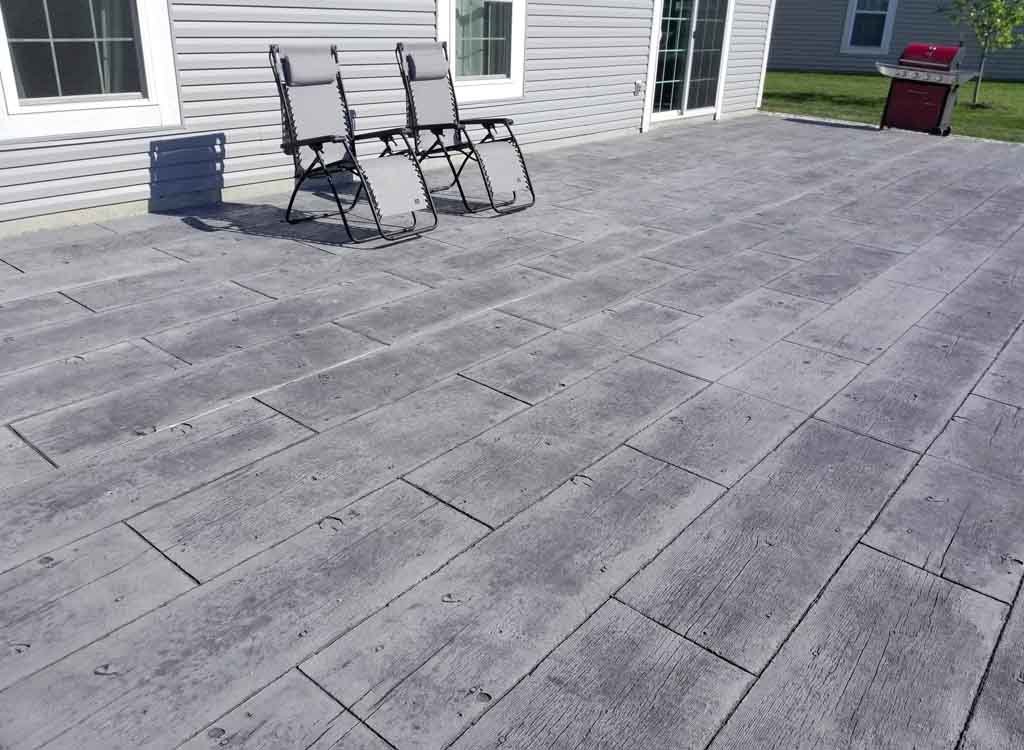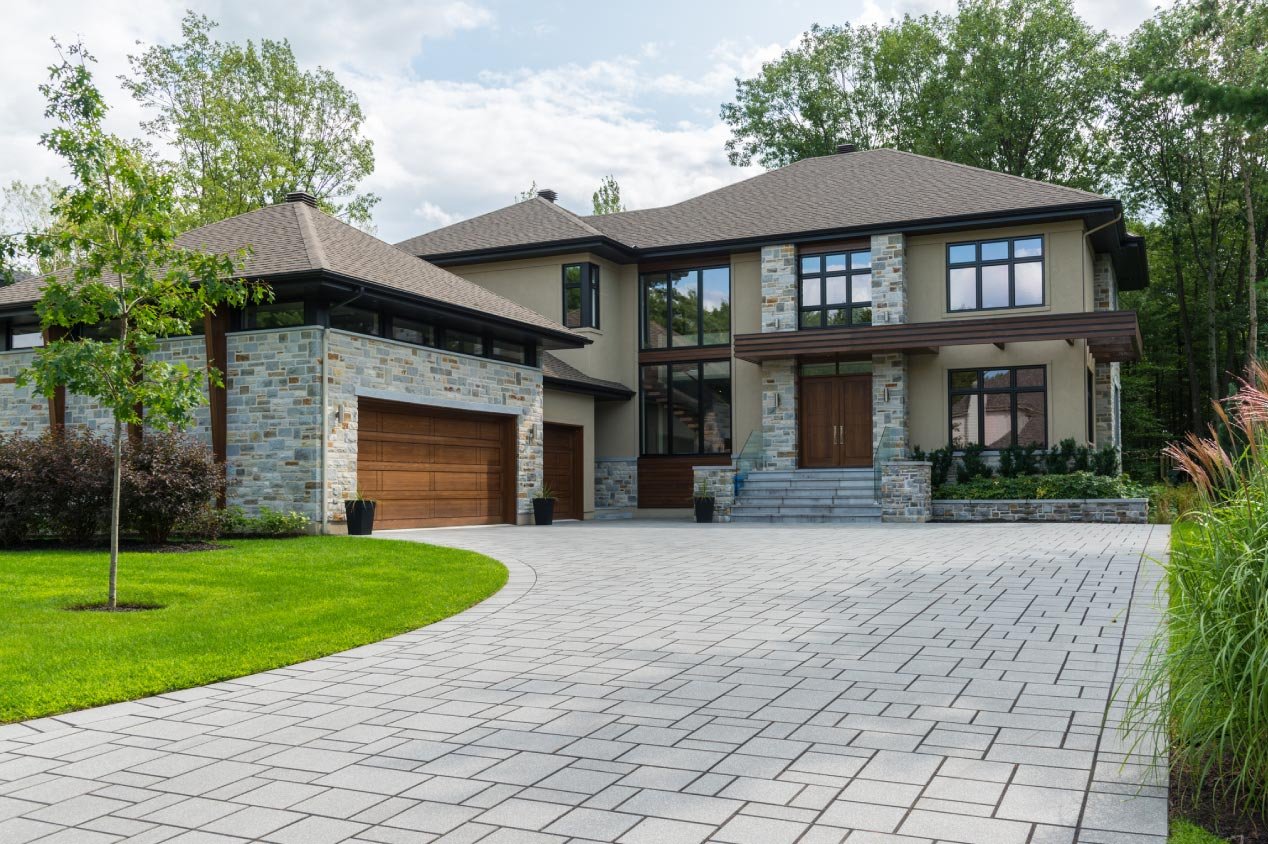The Potential Downsides and Limitations of Stamped Concrete: An Expert’s Perspective
Stamped concrete has gained huge popularity over the past few decades as a stylish and flexible option for enhancing the aesthetics of driveways, patios, walkways, and pool decks. Its ability to mimic high-end materials like brick, slate, and stone at a fraction of the cost has made it a favorite among homeowners and designers. However, like all building materials, stamped comes with its own set of drawbacks and limitations. As an expert, I believe it’s essential to consider these factors carefully before committing to this decorative finish.
High Initial Cost
One of the primary disadvantages is its high initial cost. While it is less expensive than authentic stone or pavers, it is more costly than traditional surfaces. The added expense stems from the specialized labor, molds, and coloring processes involved. Homeowners should be prepared for the upfront investment, which can be significant, especially for large areas.
Maintenance and Repair Challenges
Stamped concrete requires regular maintenance to preserve its appearance and functionality. Unlike plain concrete, which can endure minimal upkeep, it must be sealed periodically to prevent damage from moisture, chemicals, and UV rays. Failure to maintain the sealant can lead to unsightly stains, erosion, and a dull finish.
Repairing can also be problematic. Matching the color and pattern of the existing surface can be challenging, resulting in visible patches. Additionally, extensive repairs may require resurfacing the entire area, leading to higher costs and more significant disruption.

Limited Durability and Lifespan
While stamped concrete is durable, it is not as long-lasting as other materials like natural stone or pavers. Over time, it can wear down, especially in high-traffic areas. The surface can become smooth and slippery, posing a hazard during wet conditions. Furthermore, the decorative finish may fade, losing its original appeal.
Susceptibility to Cracking and Fading
Cracking is a common issue with all surfaces, and stamped concrete is no exception. Temperature fluctuations, ground movement, and heavy loads can cause cracks to develop. While minor cracks are often just aesthetic concerns, they can worsen over time, leading to structural problems.
Fading is another concern. Exposure to direct sunlight can lose its vibrant color over time, especially if not properly sealed and maintained. This fading can detract from the overall appearance and require costly resurfacing to restore its original look.
Limited Design and Pattern Options
While this offers a variety of patterns and colors, the options are still limited compared to other decorative materials. Some homeowners may find the available choices insufficient for achieving their desired aesthetic. Custom designs are possible but come at a higher cost, making them less accessible for budget-conscious projects.
Possibility of uneven texture and color
It might be difficult to stamp with a uniform texture and color. The final appearance can be influenced by various factors, including the type of material used, the installer’s skill level, and the weather during the installation. Inconsistent texture and colors might take away from the overall appearance and may need more work to fix.

Factors that exacerbate: climate, traffic, and installation
Stamped concrete problems can be made worse by several outside factors:
- Weather: Stamped concrete may be adversely affected by extremely high or low temperatures. Intense heat can result in fading and surface damage, while freeze-thaw cycles can create cracks and spalling.
- High activity: Surfaces that see a lot of foot or vehicle activity may deteriorate more quickly. Smoothing over the surface can decrease traction and raise the possibility of slips and falls.
- Improper Installation: The durability and aesthetic appeal of concrete are greatly influenced by the quality of installation. Inadequate construction, insufficient base preparation, and improper sealant application can all result in early failure and expensive repairs.
These aspects can also be taken into account while installing patios or driveways, making sure that the installation will work for the particular use case and the surrounding environment.
Addressing the Drawbacks
Despite these drawbacks, there are ways to mitigate the limitations of enhancing its performance and appearance:
- Regular Sealing and Maintenance: Applying a high-quality sealant every few years can protect stampedes from stains, moisture, and UV damage. Regular cleaning and prompt repair of minor cracks can also extend its lifespan.
- Choosing the Right Installer and Materials: Hiring an experienced contractor with a proven track record in textures can ensure proper installation and a better finish. Using high-quality materials and additives can improve durability and reduce the risk of cracking and fading.
- Considering Alternative Decorative Concrete Options: Overlays, polished, and exposed aggregate are some other options that might be more suitable for people who are worried about the limitations of stamped concrete.
When Stamped Concrete Might Not Be the Best Choice
For projects requiring the highest level of durability, substantial personalization, or locations subject to extreme weather, might not be the ideal option. Natural stone or pavers may last longer and require less care in high-traffic areas. In a similar vein, additional decorative solutions might offer more freedom and delight to homeowners looking for a distinctive, personalized design.
Final Thoughts
Without question, stamped concrete is an aesthetically pleasing and affordable way to improve outdoor areas. Before investing, though, it’s critical to take into account any potential drawbacks and restrictions. Considerations such as high beginning costs, difficult maintenance, limited durability, fading and cracking vulnerability, and design limitations are crucial. Homeowners, contractors, and designers can attain optimal outcomes for their projects by being aware of these constraints and implementing measures to alleviate them.
For stamped to perform up to expectations and deliver long-lasting beauty and functionality, careful planning, routine maintenance, and selecting the appropriate materials and installers are essential.



